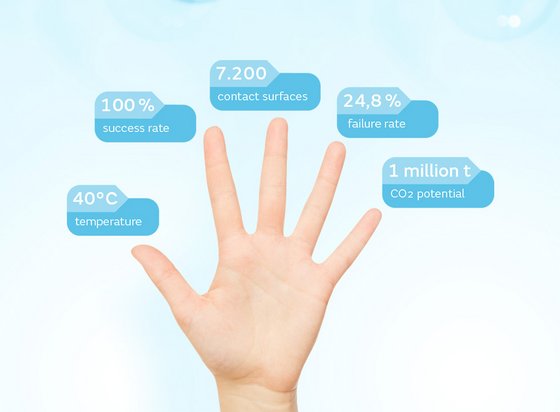40° C – the temperature
The warmer the better? Not at all, because cold water works just as well: water temperature has no demonstrable influence on the success of hand washing. However, to prevent hands from drying out and to avoid using energy unnecessarily, the water temperature should not exceed 40 °C.
100 % – the success rate
Washing hands can reduce the probability of spreading all types of germs because they are practically washed away with soap and water. Disinfectants are no competition here: a large number of these are not effective against e.g. prions (proteins that lead to diseases such as BSE) and parasites.
7,200 – the contact surfaces
Whether door handles, lift buttons, shopping trolleys or steering wheels: the average adult touches about 7,200 surfaces each day – and their face about 552 times in the same period. Hand hygiene thus plays a crucial role when it comes to breaking chains of infection, because pathogens from the touched surfaces travel further via the hands.
24.8 % – the failure rate
The proportion of work-related illnesses reported to the German Social Accident Insurance (DGUV) is almost 25 % – with the number of unreported cases being significantly higher. Correct hand washing, skin care and even hand disinfection could at least effectively prevent contagious infections and reduce this level.
1 million tonnes – the CO2 potential
If all Americans washed their hands at a lower water temperature, for example below 40° C, the USA alone could save 1 million tonnes of CO2 annually.

